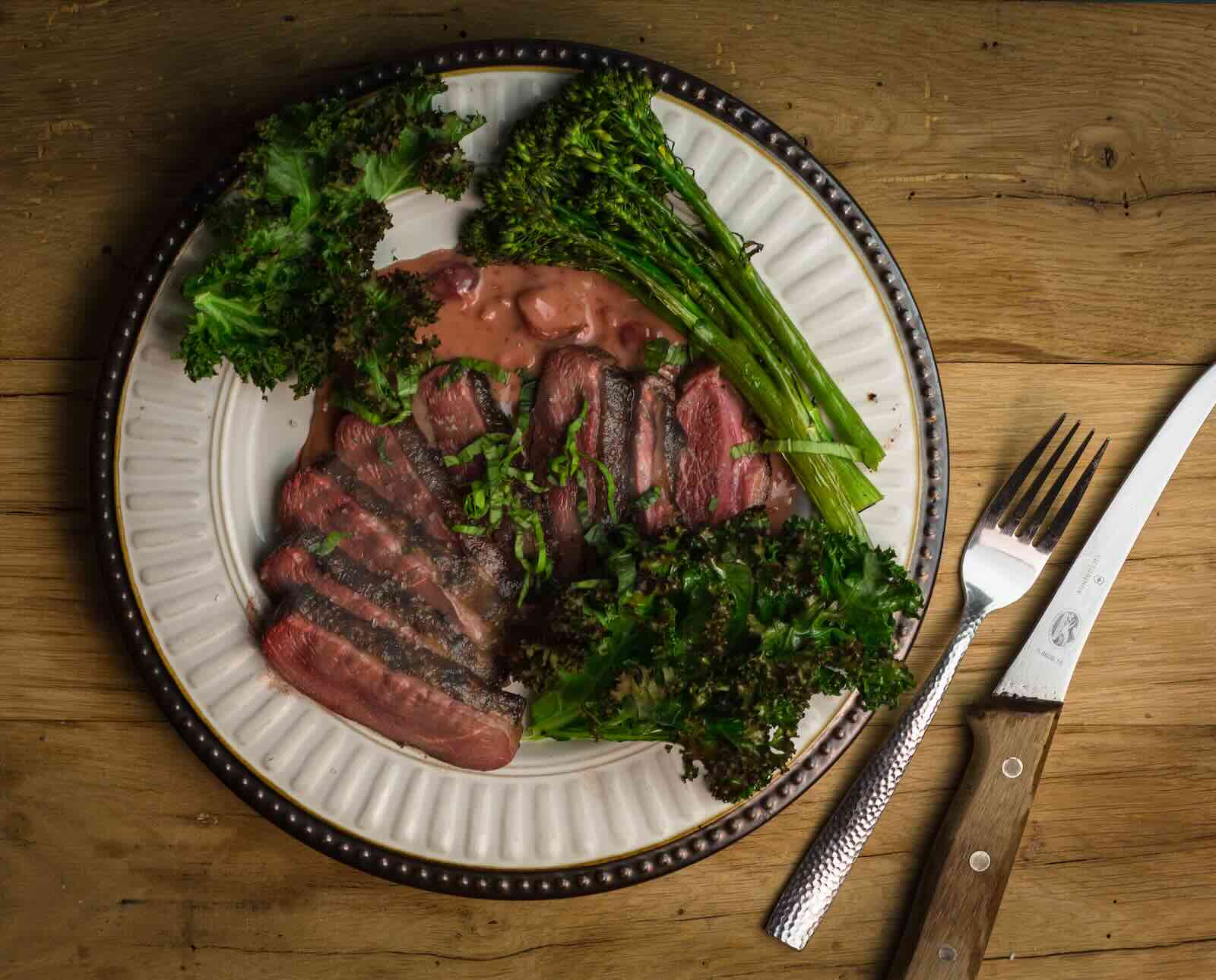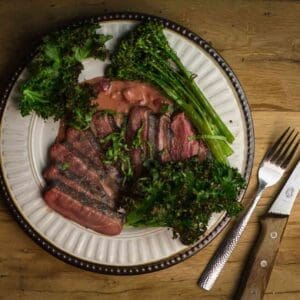Home » Small Game Cooking » Sous Vide Canada Goose with Cherry and Chardonnay Beurre Blanc
Sous Vide Canada Goose with Cherry and Chardonnay Beurre Blanc

Jack Hennessy grew up in the South Suburbs of Chicago…
This goose breast is cooked to perfection and paired with a rich, sweet beurre blanc sauce with dark cherries
Here are two must-know facts: 1) Every wild-game home cook should own a sous vide, and 2) The sous vide cooking method followed by a reverse sear is the best way to enjoy wild ducks and geese.
When a wild duck or goose breast slowly stirs, marinates, and cooks in its own fat, the end product is truly incredible. Duck confit is the perfect example of this. The skin is the best place to find waterfowl fat and flavor. As a result, it is always recommended to pluck breasts and keep the skin on. After all, waterfowl skin is the bacon of the wild bird world. If you only have skinless goose breasts, consider purchasing some duck fat, which can be found at many grocery stores, and adding it to your sealed sous-vide bag along with the white wine and other ingredients this recipe calls for.
The beurre blanc here is very rich and slightly sweet. It would pair well with any waterfowl species and several fish species, including salmon, swordfish, and mahi mahi. However, it may be too sweet and not savory enough to serve alongside most upland birds. Of course, that decision is entirely up to you.
Canada goose should taste incredible, with flavors more reminiscent of roast beef than irony waterfowl, assuming it’s served medium-rare. With every degree past medium-rare (130-140 F), with an emphasis on “rare,” the flavor potential drops exponentially. The instructions provided here will help ensure you serve your goose breasts medium-rare.
Lastly, and most importantly, carve Canada goose breasts pencil-thin. Shorter muscle fibers mean less chewing required, plus you may also be able to spot any steel shot as you slice. Also, remind everyone at the dinner table to chew slowly. Canada goose, especially if from an older bird and not aged, can be tough. More molar power may be required, but if not careful, chomping could mean chipping a tooth should you bite into steel shot. Chew carefully!

Sous Vide Canada Goose with Dark Cherry and Chardonnay Beurre Blanc
Equipment
- Chamber vacuum sealer optional
Ingredients
- 2 Canada goose breasts
Marinade
- 2 cloves garlic smashed
- 1 apple sliced
- 1/4 lemon juiced
- Chardonnay wine as needed
- Kosher salt
- Black pepper freshly cracked
Beurre Blanc
- 2 cups Chardonnay wine
- 2 tsp garlic freshly minced
- 1/4 tsp Kosher salt
- 1/4 tsp black pepper ground
- 1/4 lemon juiced
- 1 cup fresh dark cherries pitted and halved or quartered
- 1 tbsp brown sugar
- 1 cup heavy whipping cream
- 1 lb salted butter room temperature and cut into pats
Instructions
- If you have a cryo or chamber vacuum sealer, seal the goose breasts in a bag with marinade ingredients. Otherwise, place these ingredients into a bowl and let the goose marinate. Marinate the goose for three to five hours, regardless of which method you use.
- Using a sous vide cooker, sous vide the breasts (still sealed up with marinade, if possible) for 2-1/2 hours at 118 F. Remove the meat and pat it dry.
- Reverse-sear the goose on a 600 F grill, flat top, or skillet for one minute per side. It helps to put a grill weight on the breast when searing.
- Lightly tent the meat with aluminum foil and allow it to rest for 15 minutes before carving.
- To make the beurre blanc, add two cups of wine, the juice from 1/4 lemon, garlic, salt, and black pepper to a medium saucepan. Bring it to a simmer. Once reduced to a third or quarter of the original amount, add one cup of heavy whipping cream. Continue to reduce until, again, the amount is approximately half, then add one cup of pitted dark cherries and one tablespoon of brown sugar. Continue to reduce until one-third of the original amount. Then, turn off the heat. Slowly stir in one pound of room-temperature pats of butter.
- To serve, place the beurre blanc at the bottom of the plate or atop the carved goose. Garnish with fresh basil if you’d like.
Nutrition
Jack Hennessy grew up in the South Suburbs of Chicago and didn't start hunting until he attended graduate school in Spokane, Washington, at the age of 26. Hennessy began work in professional kitchens in high school but didn't start writing wild game recipes until he joined the Spokesman-Review in 2014. Since then, his recipes have appeared with Petersen's Hunting, Backcountry Journal, Gun Dog Magazine, among many others. He now lives with his Wirehaired Vizsla, Dudley, in Wichita, Kansas.



